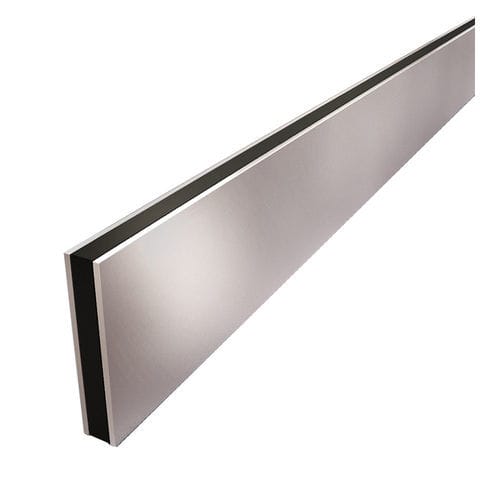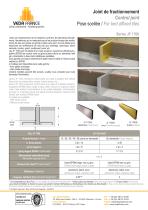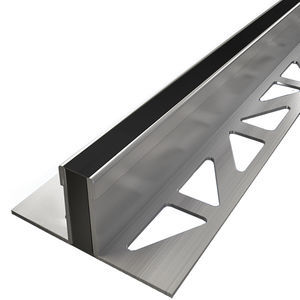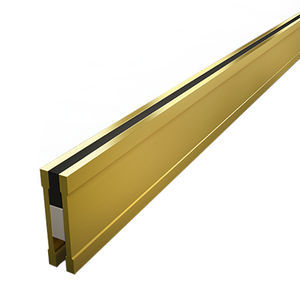
- Flooring & Wallcovering
- Tile, Mosaic
- Aluminum load joint
- GV2 VEDA FRANCE
Aluminum load joint JF 1700EPDM



Add to favorites
Compare this product
Characteristics
- Material
- aluminum, EPDM
Description
Heights from 10 to 50 (other on request)
Partition of adhesive affixed floors
The JF 1700 range of control joints has been designed to prevent problems, such as cracking and tile lifting, that will always appear when the floor covering is laid on large surfaces without any joints. The joints of the JF 1700 range are used as control joints with fresh mortar-laid floor covering such as tiles, ceramics, marble, natural stone etc.
They are suitable for commercial and industrial uses. In general, control joints are used to enclose areas between 25 m2 and 60 m2, with a maximum linear dimension between 5 m and 10 m. The joint must reach a minimum depth of 2/3 of the thickness of the floor covering and its substrate mortar, but preferably the total thickness (substrate mortar + covering).
It comprises side sections and an flexible EPDM insert in black, grey or beige (other colours available on request), vulcanised to two aluminium strips (also available in brass (JF 1700/B) or stainless steel (JF 1700/S)). The bay joints of the 1700 range are available in several heights (20 mm, 30 mm, 40 mm and 50 mm) and in the width of 9 mm according to the project requirements. Length of 2.50 lm.
The control joints of the JF 1700 range are available in black, grey and beige (other colours on request). The metal strips have notches to secure the rods for a better anchor to the screed. The bay joints of the JF 1700 range can also be supplied with plain metal strips for retrofitting.
Catalogs
Control joints - JF 1700
1 Pages
THE RANGE
64 Pages
Exhibitions
Meet this supplier at the following exhibition(s):

Related Searches
- Trim board
- Expansion joint
- Aluminum trim board
- Metal expansion joint
- Aluminum expansion joint
- Floors expansion joint
- Transition profile
- Wall-mounted expansion joint
- Flooring expansion joint
- Stainless steel edge trim
- Drive-over expansion joint
- Step trim board
- Silver-colored edge trim
- Waterproof expansion joint
- Seismic expansion joint
- Stainless steel expansion joint
- Rubber expansion joint
- Plastic expansion joint
- Stair nosing edge trim
- Pedestrian expansion joint
*Prices are pre-tax. They exclude delivery charges and customs duties and do not include additional charges for installation or activation options. Prices are indicative only and may vary by country, with changes to the cost of raw materials and exchange rates.









